AI in Cybersecurity: How Artificial Intelligence is Revolutionising Threat Detection
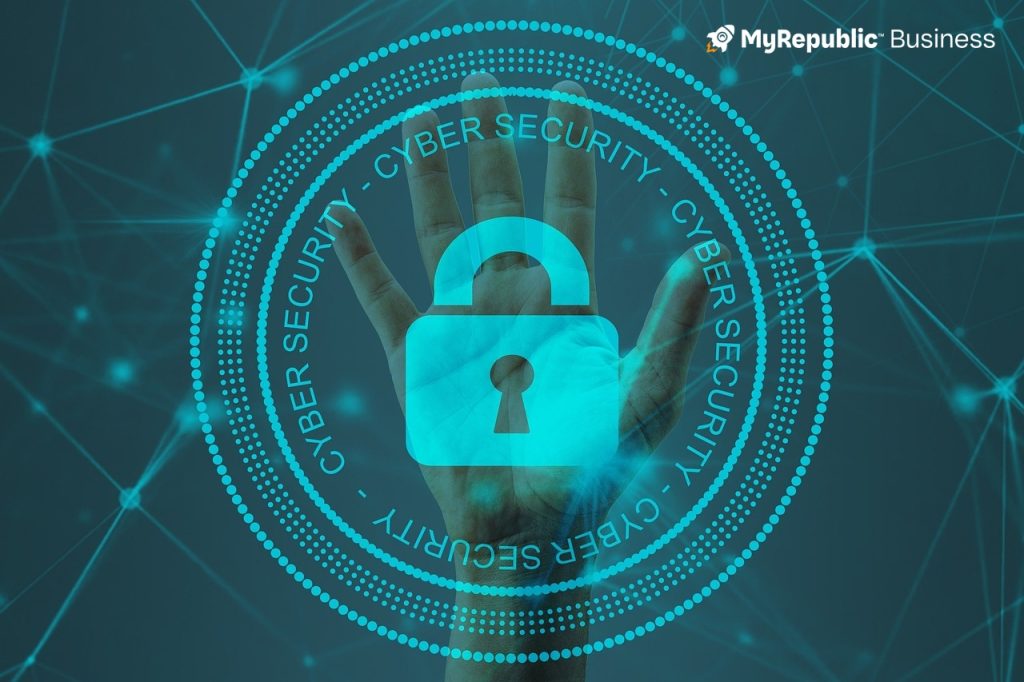
Cybersecurity has become a crucial concern for businesses of all sizes in Singapore and worldwide. However, small and medium-sized enterprises (SMEs) are often seen as particularly vulnerable to cyber threats.
This is primarily due to limited resources, a lack of cybersecurity expertise, and the false assumption that cybercriminals only target large corporations. In Singapore, SMEs contribute significantly to the economy, making them a prime target for cyberattacks. According to a report by Singapore’s Cyber Security Agency, 40% of cyberattacks in 2023 targeted SMEs. As these businesses digitise their operations, ensuring their systems are secure is more important than ever.
This is where Artificial Intelligence (AI) comes into the picture. AI is no longer just a buzzword in tech; it is transforming industries across the board, and cybersecurity is no exception. From detecting sophisticated cyber threats to automating routine security tasks, AI is reshaping how businesses approach cybersecurity. Its ability to analyse vast amounts of data quickly and spot anomalies in real time has made it an invaluable tool in threat detection and prevention.
By adopting AI-powered cybersecurity tools, SMEs can stay ahead of the curve, protecting themselves from both common and advanced threats. This article explores how AI is revolutionising threat detection and how SMEs in Singapore can leverage this powerful technology to safeguard their businesses.
The Rising Threat of Cyber Attacks: Why SMEs are Targets
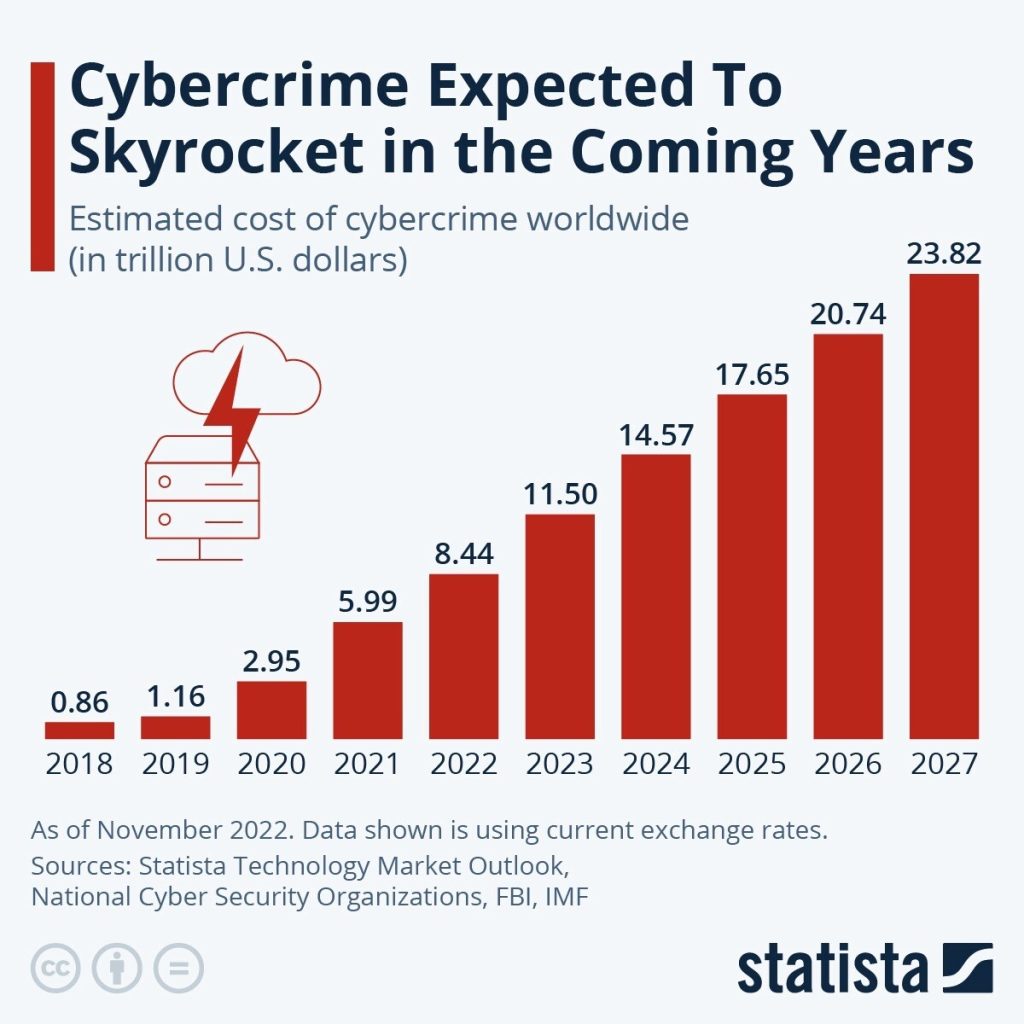
Image source: Statista
SMEs are often perceived as easier targets by cybercriminals compared to large corporations. One key reason for this is that many SMEs operate under the misconception that they are “too small” to be on the radar of hackers. In reality, cybercriminals frequently target smaller businesses precisely because they tend to have weaker security measures in place.
Many SMEs do not have dedicated IT departments or cybersecurity experts to manage and monitor their systems around the clock. This leaves them exposed to various types of cyberattacks, from phishing and ransomware to malware and data breaches. Additionally, the cost of implementing advanced security solutions can be prohibitive, leading some SMEs to opt for basic or outdated protection, which is often insufficient to defend against modern threats.
The lack of cybersecurity expertise within SMEs can further compound their vulnerability. Employees might not be adequately trained on how to recognise phishing scams or handle sensitive data securely. In a time when human error is responsible for a significant portion of breaches, this can be a critical weakness.
The growing trend of digitisation—driven by the need for online sales, remote work, and cloud-based services—has opened up new vulnerabilities. While benefiting from this digital transformation, SMEs must also prioritise securing their systems to avoid becoming easy prey for cybercriminals.
What is AI-Powered Threat Detection?
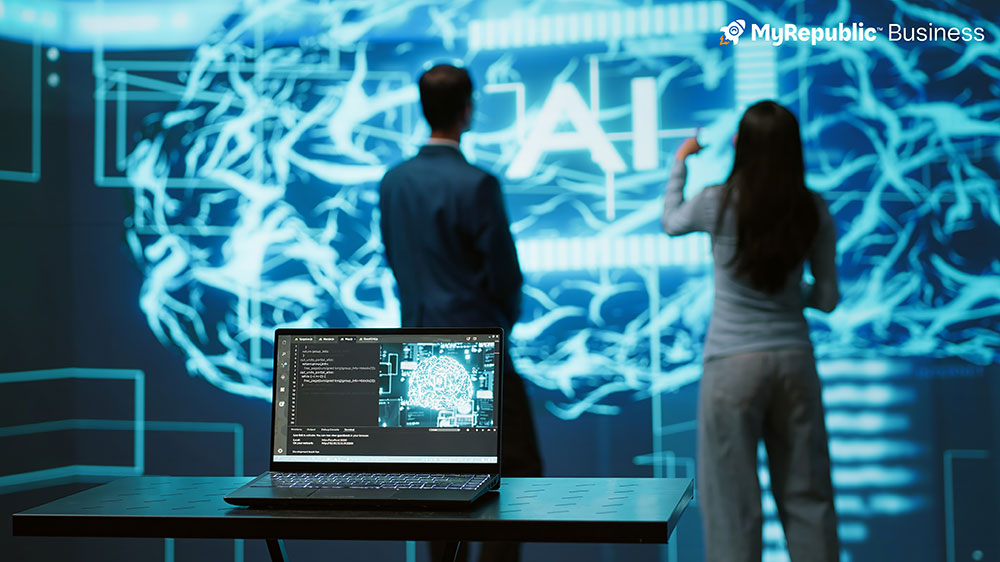
Image Source: freepik.com
AI-powered threat detection refers to the use of Artificial Intelligence and Machine Learning (ML) technologies to identify, analyse, and respond to cyber threats in real time. Unlike traditional security systems, which rely on predefined rules and human intervention, AI can autonomously detect unusual patterns and behaviours, even those that may not have been encountered before. This makes it an invaluable tool for tackling new and evolving cyber threats.
At the core of AI-powered threat detection is its ability to learn from vast amounts of data. It can analyse millions of data points in seconds, identifying anomalies and suspicious activities that might go unnoticed by traditional security systems. Machine learning models can also adapt over time, improving their accuracy in detecting threats as they encounter more data.
What’s the Difference between Traditional Cybersecurity and AI-Powered Cybersecurity?
A significant difference between AI-driven approaches and traditional cybersecurity methods is how they handle new or unknown threats. Traditional systems rely on known threat signatures or rules-based algorithms to identify attacks, which leaves them vulnerable to zero-day attacks—threats that exploit previously unknown vulnerabilities. In contrast, AI’s ability to detect behavioural anomalies allows it to catch zero-day attacks before they cause serious damage.
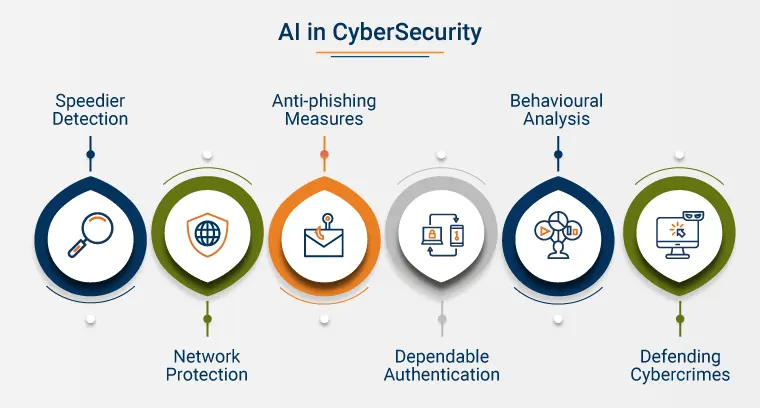
Image Source: Data Science Dojo
For SMEs, this means AI can serve as a much-needed ally in their cybersecurity strategy. AI systems continuously monitor networks, identify malicious activities, and even respond to threats in real-time, without the need for constant human oversight. This level of automation can significantly reduce the workload on small IT teams, allowing them to focus on other critical business operations while staying protected.
How AI is Revolutionising Threat Detection for SMEs
AI is fundamentally changing how SMEs approach cybersecurity, offering advanced tools that were once only accessible to large enterprises. Here’s how AI is making a difference:
1. Real-Time Monitoring and Detection: One of AI’s most powerful features is its ability to monitor and analyse network traffic in real time. Unlike traditional systems that may only perform periodic checks, AI tools are constantly active. This means they can detect anomalies—such as unusual login attempts, suspicious file transfers, or unexpected spikes in network activity—as soon as they occur.
2. Identifying New and Unknown Threats (Zero-Day Attacks): Cybercriminals frequently develop new, sophisticated attacks that traditional security systems can’t recognise because they rely on known threat signatures. AI-powered systems, on the other hand, excel at identifying zero-day threats by spotting unusual behaviours and deviations from the norm. This predictive capability allows AI to uncover potential threats that haven’t been seen before, offering SMEs a critical layer of defence against evolving cyber risks.
3. Reducing False Positives: One common challenge in traditional cybersecurity is the high number of false positives—alerts generated for benign activities that appear suspicious. SMEs often don’t have the manpower to sift through these alerts, which can lead to alert fatigue or, worse, missed real threats. AI can significantly reduce false positives by more accurately discerning between legitimate activities and true security threats, allowing teams to focus on real risks without being overwhelmed.
4. Automating Routine Security Tasks: AI takes over many routine security tasks that would otherwise require manual attention, such as patch management, vulnerability scanning, and even initial threat responses. By automating these processes, AI frees up IT teams to focus on more complex and strategic tasks. For SMEs, which often have small or overstretched IT departments, this automation is a game changer. It allows them to maintain high levels of security without the need to hire additional cybersecurity experts.
Overall, AI-powered threat detection allows SMEs to stay one step ahead of cybercriminals, protecting their data, systems, and customers more effectively than traditional methods ever could. The combination of real-time monitoring, predictive threat detection, and automation makes AI a critical ally in today’s cybersecurity landscape.
Case Study: AI in Action for SME Cybersecurity
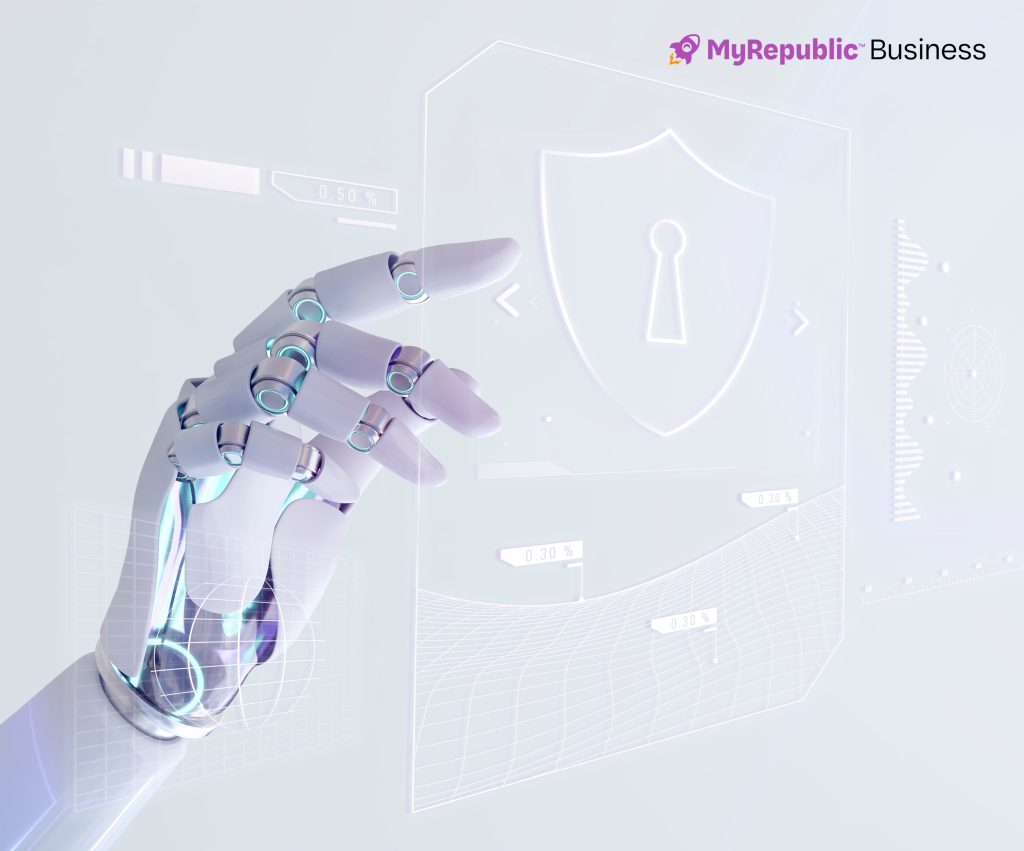
To better understand how AI is transforming cybersecurity for SMEs, let’s take a look at a real-world example:
A small tech company based in Singapore is struggling with frequent phishing attacks that targeted its employees. The company has limited IT resources and can’t afford to employ a full-time cybersecurity team. Their traditional security measures are reactive, identifying threats only after damage has already been done.
In response to these challenges, the company has adopted an AI-powered cybersecurity platform. The platform leverages machine learning algorithms to monitor all inbound and outbound network traffic in real time. It instantly flags unusual patterns, such as multiple login attempts from different geographic locations or abnormal file access requests.
Within the first month, the AI system identifies and blocks a sophisticated phishing attempt aimed at one of the company’s senior employees. By recognising subtle deviations from normal email behaviour—such as the tone and structure of the email—the AI flags the message as suspicious. The system not only quarantined the email but also sent an alert to the employee and the IT team, helping them avoid what could have been a major data breach.
This case highlights how AI can empower SMEs to defend against advanced cyber threats even with limited resources. By automating many aspects of threat detection and response, AI helps SMEs protect their data and maintain their reputations without requiring large investments in manpower or technology.
AI Tools for SMEs to Enhance Cybersecurity
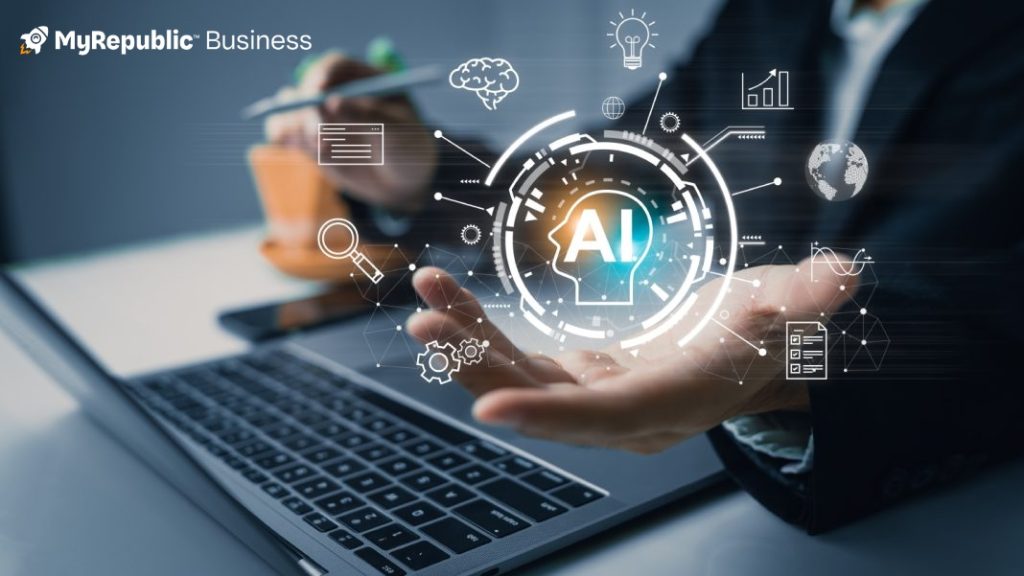
For SMEs looking to bolster their cybersecurity defences, AI-powered tools can be a game changer. While many small businesses may feel intimidated by the idea of adopting cutting-edge technology, several AI-based tools are designed specifically with ease of use and cost-efficiency in mind. Here are some accessible AI-driven solutions that SMEs can leverage to protect their data and networks.
1. Darktrace is an AI cybersecurity platform that specialises in real-time threat detection and autonomous response. It uses machine learning to understand the normal behaviour of a network, allowing it to spot anomalies instantly. SMEs benefit from Darktrace’s ease of implementation, and its AI tools work 24/7 to protect against insider threats, phishing attempts, and advanced cyberattacks. The system can even neutralise threats in real time by quarantining compromised systems or users before the attack spreads.
2. CylancePROTECT is another AI-powered solution designed for endpoint protection. It focuses on preventing malware and ransomware attacks by predicting and blocking threats before they execute. The platform is lightweight, making it an excellent option for SMEs that don’t want to burden their systems with heavy security software. Its predictive AI technology means it can stop cyberattacks without requiring constant signature updates, reducing maintenance work for small IT teams.
3. Vectra AI is a platform designed to detect hidden cyberattacks by analysing network traffic in real time. It excels at identifying covert threats, such as insider attacks or advanced persistent threats (APTs), which often go unnoticed by traditional security measures. Vectra’s AI-powered tools can help SMEs pinpoint abnormal activities within their networks, respond quickly to threats, and reduce potential damage.
4. FortiAI leverages machine learning to detect and mitigate cybersecurity threats autonomously. This platform is particularly beneficial for SMEs because it automates many aspects of threat management, from detection to response. FortiAI reduces the need for large IT teams by offering a virtual assistant that handles routine security tasks. It’s a cost-effective solution for businesses looking to enhance their security posture without significant investment in manpower or technology.
These tools make AI accessible to SMEs, offering powerful protection at a fraction of the cost typically associated with enterprise-level security systems. By adopting AI-driven solutions, SMEs can secure their networks more effectively, freeing up resources to focus on their core business operations.
Challenges and Considerations for SMEs Adopting AI in Cybersecurity
While AI presents immense opportunities for enhancing cybersecurity, there are also challenges that SMEs must consider before adopting AI-powered solutions. It’s important to weigh these factors to ensure a successful and efficient integration of AI into an SME’s cybersecurity strategy.

Costs and Initial Setup
AI-based cybersecurity tools, while increasingly affordable, still represent a significant investment for many SMEs. The cost of implementation includes not only the price of the software but also the necessary hardware and infrastructure to support it. Additionally, some AI solutions require continuous monitoring and updates, which can further increase operational expenses. SMEs need to evaluate the long-term benefits against the upfront costs to ensure that the investment makes sense for their business.
Need for Employee Training
AI tools are sophisticated and often require a basic understanding of how they work to be used effectively. For SMEs with limited technical expertise, this can pose a challenge. Employees may need to be trained on how to interpret alerts, respond to threats, and manage the AI tools. The integration of AI into cybersecurity processes will likely require a shift in how employees approach digital security, which means investing in training and development.
Data Privacy and Ethical Concerns
AI systems rely heavily on data to learn and improve over time. For SMEs handling sensitive customer or financial data, there are concerns about privacy and the ethical use of AI in monitoring communications and network activity. Businesses must ensure that any AI tools they adopt comply with local and international data protection regulations, such as Singapore’s Personal Data Protection Act (PDPA). This includes understanding how AI systems collect, store, and analyse data, and ensuring that customers’ privacy is respected.
Complexity of Integration with Existing Systems
SMEs often rely on a mix of software and hardware systems, some of which may be outdated or incompatible with modern AI tools. Integrating AI into existing security frameworks can be complex and may require a reconfiguration of current IT systems. SMEs need to assess whether their infrastructure is ready for AI adoption and may need to upgrade certain elements to fully benefit from the technology.
Balancing Automation with Human Oversight
While AI can automate many cybersecurity tasks, it’s important to strike a balance between automation and human oversight. AI systems are not infallible, and certain threats may require human judgement to be assessed properly. SMEs need to ensure that AI tools complement their existing cybersecurity efforts, rather than replacing the need for skilled cybersecurity professionals.
By carefully considering these challenges, SMEs can make informed decisions when adopting AI-driven cybersecurity solutions. Proper planning, investment in employee training, and attention to data privacy can help mitigate these challenges and ensure a smoother transition into an AI-powered cybersecurity framework.
The Future of AI in Cybersecurity
The role of AI in cybersecurity is rapidly evolving, and its future promises even more sophisticated tools to combat increasingly complex cyber threats. For SMEs, staying ahead of these developments is key to maintaining a strong cybersecurity posture. Here are some emerging trends and potential advancements in AI for threat detection that SMEs should be aware of:
AI-Driven Predictive Analytics
One of the most exciting advancements in AI cybersecurity is the use of predictive analytics. By analysing historical data, AI can forecast potential vulnerabilities and identify attack patterns before they occur. This proactive approach enables SMEs to address weaknesses in their systems and implement security measures ahead of time. Predictive AI could soon make it possible to anticipate cyberattacks, reducing the likelihood of breaches even before they manifest.
AI and Cybersecurity-as-a-Service
As the demand for AI-driven cybersecurity increases, many service providers are offering Cybersecurity-as-a-Service (CaaS) solutions that leverage AI. These cloud-based platforms offer SMEs affordable and scalable security services without the need for heavy investment in hardware or infrastructure. SMEs can subscribe to CaaS solutions that integrate AI threat detection and response capabilities, allowing them to maintain a high level of protection while focusing on their core business operations.
AI and Blockchain Integration
The integration of AI with blockchain technology is another trend gaining traction. Blockchain offers a decentralised and secure way to store and verify data, which can complement AI’s ability to detect anomalies. Together, AI and blockchain could provide even greater security by ensuring that data is both tamper-proof and automatically monitored for threats. For SMEs, this could mean enhanced protection for financial transactions, customer data, and sensitive business information.
Autonomous Security Systems
While AI currently assists in monitoring and responding to cyber threats, the future may see fully autonomous security systems. These systems would not only detect and respond to attacks but also continuously learn and adapt to new threats without human intervention. This level of autonomy could be especially beneficial for SMEs, allowing them to maintain robust security even with minimal IT personnel. Autonomous systems will likely include features such as automatic patching of vulnerabilities and self-healing networks that repair themselves after an attack.
The future of AI in cybersecurity is promising, with new technologies and trends emerging that will help SMEs stay ahead of evolving threats. As AI continues to develop, businesses will be able to leverage more advanced and automated tools to protect themselves from increasingly sophisticated cyberattacks. By keeping an eye on these advancements, SMEs can ensure they are ready to adopt the latest AI solutions and remain secure in the face of a constantly changing cyber landscape.
The Next Steps for SMEs in Cybersecurity
As the digital landscape continues to evolve, the cybersecurity challenges facing SMEs are becoming more complex. However, the rise of AI-powered cybersecurity solutions offers a powerful means of defending against these growing threats. From real-time monitoring and detection to the automation of routine tasks, AI has revolutionised how businesses approach cybersecurity, giving SMEs the tools they need to protect their operations effectively.
The first step when adopting new technology is to carefully evaluate the costs, ensure employee training, and address privacy concerns to fully benefit from AI-powered solutions. By keeping these challenges in mind, SMEs can make well-informed decisions about their cybersecurity strategies.
Looking ahead, AI will continue to play a critical role in shaping the future of cybersecurity. With developments like predictive analytics, autonomous security systems, and AI-driven IoT protection on the horizon, SMEs can look forward to even more powerful tools to safeguard their data and networks.



















